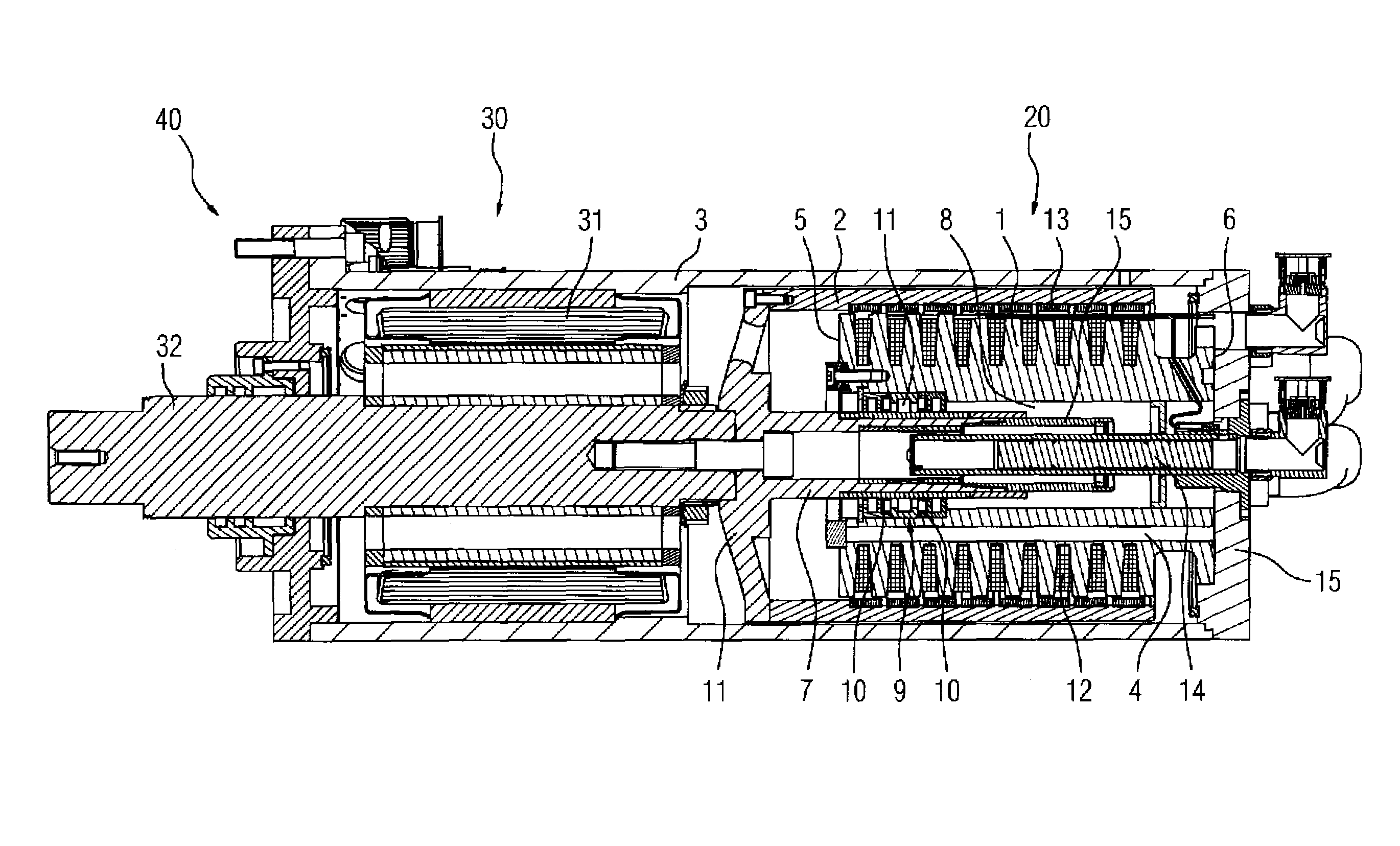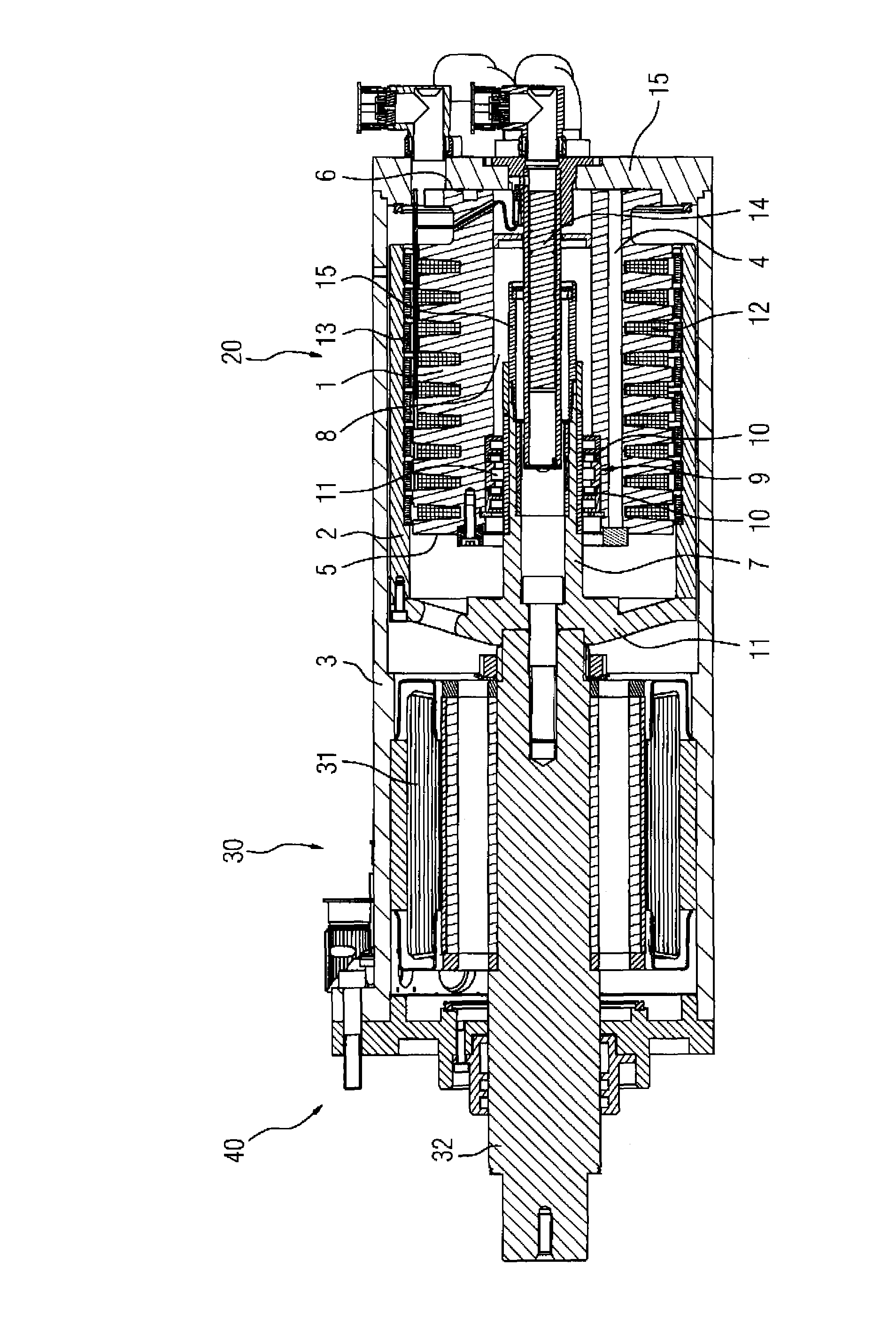Electric machine having a rotary and a linear actuator
a technology of linear actuators and electric machines, applied in the field of electric machines, can solve problems such as high feed forces, and achieve the effect of high feed forces
- Summary
- Abstract
- Description
- Claims
- Application Information
AI Technical Summary
Benefits of technology
Problems solved by technology
Method used
Image
Examples
Embodiment Construction
[0018]The FIGURE illustrates an embodiment of an electric machine for implementing a combined rotary and linear drive. The electric machine 40 has a first machine part 30 that has in a stator a stator element 31 with a stator winding (not illustrated in more detail in the FIGURE). The stator of the machine part 30 is designed as a hollow cylinder, there being arranged in the interior of the hollow cylinder a rotor element 32 that is connected to a shaft and can be moved in a rotating fashion. The stator winding of the stator element 31 produces, for example, the main field of the machine part 30, while an exciter winding or alternatively permanent magnets is / are arranged on the rotor element and serve to produce the exciting field. The machine part 30 therefore acts generally as a rotary actuator interacting with a rotary movement of the rotor element 32. In motor mode, the rotor element 32 with the shaft attached thereon is set moving by the stator field, whereas in generator mode,...
PUM
 Login to View More
Login to View More Abstract
Description
Claims
Application Information
 Login to View More
Login to View More - R&D
- Intellectual Property
- Life Sciences
- Materials
- Tech Scout
- Unparalleled Data Quality
- Higher Quality Content
- 60% Fewer Hallucinations
Browse by: Latest US Patents, China's latest patents, Technical Efficacy Thesaurus, Application Domain, Technology Topic, Popular Technical Reports.
© 2025 PatSnap. All rights reserved.Legal|Privacy policy|Modern Slavery Act Transparency Statement|Sitemap|About US| Contact US: help@patsnap.com


